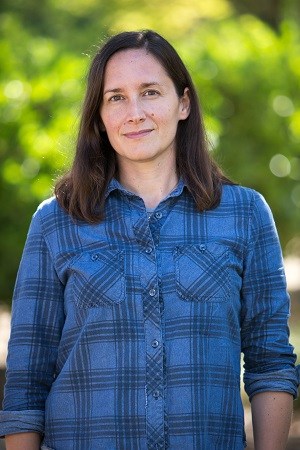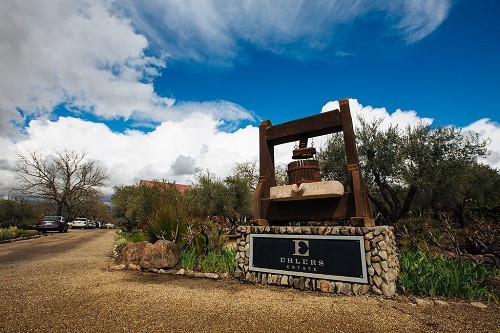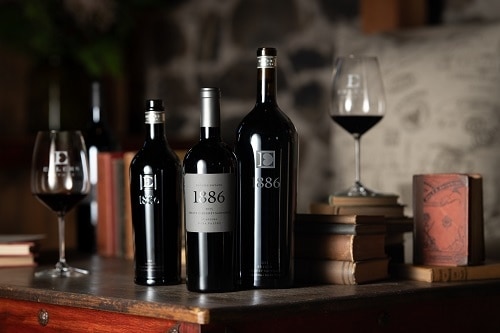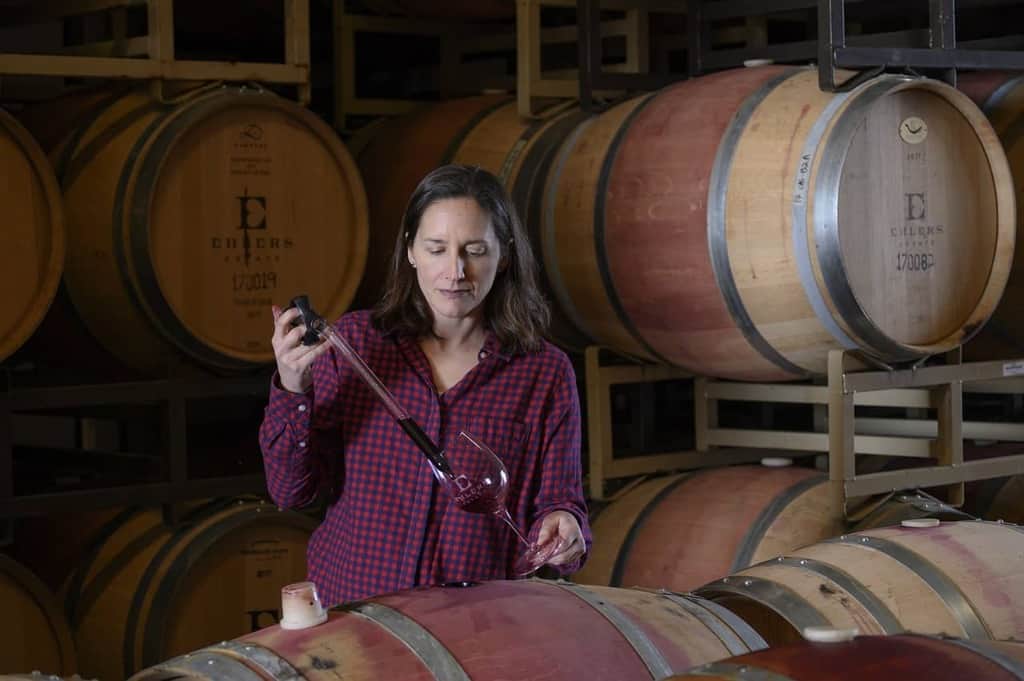Ehlers Estate is a 42-acre, organic winery in St. Helena appellation of the Napa Valley. It has a unique microclimate, lying between the Mayacamas to the west and the Vaca mountains to the east.

I have an interesting relationship with the winery. My maiden name is Ehler and when I was in high school my parents had bought a bottle of wine to save and give to me when I graduated college. Being the no-good teenager I was at the time, when I found the bottle stashed away in the basement, my friends and I drank it. My parents were livid. I always felt really bad about it, so later in life I purchased them a nice bottle of Ehlers Cabernet Sauvignon and continue to do so for special occasions here and there. So when I found out that I would be staying at Meadowood in the Napa Valley for the Wine Writer Symposium, just down the road from Ehlers Estate, I knew I had to go there.
In August, Ehlers took on Laura Díaz Muñoz as their new winemaker. My travel buddy and fellow for the symposium, Ellen Clifford and I went to chat with her over a private tasting.
Meet Ehlers Estate Winemaker Laura Díaz Muñoz
Carrie: You started your career in La Mancha, can you tell me about your journey here?
Laura: I started working a couple of internships first in Somontano, and later in a cooperative in La Manchuela. But my first full-time job was at Finca Otero, owned by Gonzalez Byass. I worked with Verdejo, Sauvignon blanc, Tempranillo, Graciano, Syrah and Bordeaux varietals, while working in Finca Otero. There, we used to sell most of the wine in the UK market, so I needed to improve my English and I also wanted to learn more about Sauvignon Blanc, so I went to New Zealand and worked at Isabel Estate Vineyards for a harvest. I also worked in Chile at Calina Winery while waiting for my visa to come back to US to work at Cardinale/Lokoya/La Jota. I’ve been in California for 12 years now.
Carrie: You are new in your role here as winemaker, can you tell me what kind of signature you’re going to put on the product?
Laura: My signature will be highlighting the sense of place in the wine. I like to make wines that enhance the particular characteristics of the soil and the microclimate, respecting the purity of the varietal. I’ll be sure that farming and winemaking are aligned to be able to get the potential of this site. I might plant new varietals, like Malbec, to be able to complete the five red classic Bordeaux varietals. As a winemaker, I get bored easily and Ehlers is open to sourcing other fruit to play with. Options to explore and to get excited! I’m contemplating the option of sourcing for Garnacha. My favorite varietal. I follow Spanish producers like Comando G in Spain. Funny enough, now that I live in US, I more closely follow Spanish producers.
Carrie: Yes I love Comando G!

We begin tasting some of the wines set out for us. While tasting the Sauvignon Blanc, Laura says, “When my first vintage is released, you will find a lot of Galerie, my past project, in the Sauvignon Blanc–lots of batonnage and concrete. The clone we use is Clone 1 and it gives a lot of beautiful passion fruit that lends itself to the creaminess from the lees.”
Carrie: Can you tell me about your first solo project Galerie? What was your mission when making these wines?
Laura: I had been working with Jackson Family Wines as associate winemaker for Cardinale, Lokoya, Mt. Brave and La Jota since 2007 and decided to launch a pet project called Galerie in 2012. It is an interesting project where we made two Cabernets and two Sauvignon Blancs, using the same exact wine-making techniques, but one of each using fruit from Napa and one using fruit from Knight’s Valley. Letting the fruit and terroir speak for themselves. We also made a Riesling from Spring Mountain.
Carrie: In regards to climate change, what are you doing at Ehlers to get in front of it?
Laura: Ehlers has been certified organic for 10 years. We are very lucky to have vigorous vines that are 25 years old, so well stablished and healthy soils. We have two wells with plenty of water. We also have loamy soil and clay that retains water, but also rocky topsoil that drains well. We keep canopy under control and we do aggressive hedging. Thinning is crucial to achieve a balanced load of fruit. We use Tule to make irrigation decisions. We shade the grapes with shade cloth where needed to retain acidity and elongate time of ripeness. 2018 yields were very high everywhere, but I dropped fruit to keep concentration.
We move onto tasting the Portrait which is a blend of 60% Cabernet with some Merlot and Cabernet Franc.
Laura: When we have Malbec it will be in there– it will be a good representation of the place.
My fellow of the symposium, Ellen Clifford, chimed in “Do you pick by taste and feel, or measurements?
Laura: I look technically at measurements, but the flavor is most important. For example, for Cabernet Franc, when there is no green it’s time to pick. When Merlot is getting closer to dark fruit, it’s too ripe. For Cabernet, I extend as much as possible– I want the red fruit to turn to dark fruit.
Carrie: Can you tell me about the LeDucq Foundation?
Laura: Perfect timing– let’s move onto the LeDucq Cabernet–it’s big and bold just like him. The LeDucq trust (named for Jean and Sylviane LeDucq the couple who built the winery) gives 100% of proceeds to raise money for cardiovascular research. That’s why the logo has a heart inside of the name. When winemaker fellows say ‘It’s not like we’re saving lives, we’re just making wine.’ I can say in my case we are saving lives!

I asked her about being a female winemaker, she said, “There are more and more in the valley, plus right now there are so many female assistant winemakers–soon they’ll be the ones in charge.”
Carrie: You have two young boys do you think that they’ll follow in your footsteps?Laura: I’m hoping the younger one will be the winemaker. My older one is very gregarious–he’ll be the wine salesman. [laughs]
Carrie: What do you think the future of Napa wine is?
We are tasting the 1886 Cabernet and Laura says, “The future is in its history, just like this wine, named for the year Bernard Ehlers finished the stone barn that still stands on what was once a small ten acre plot. It’s also in the personal touch a winemaker adds to each new vintage.”
We wrap up, and I of course purchase a bottle of the 1886 to give to my parents–to make up for the past and to celebrate the future.
